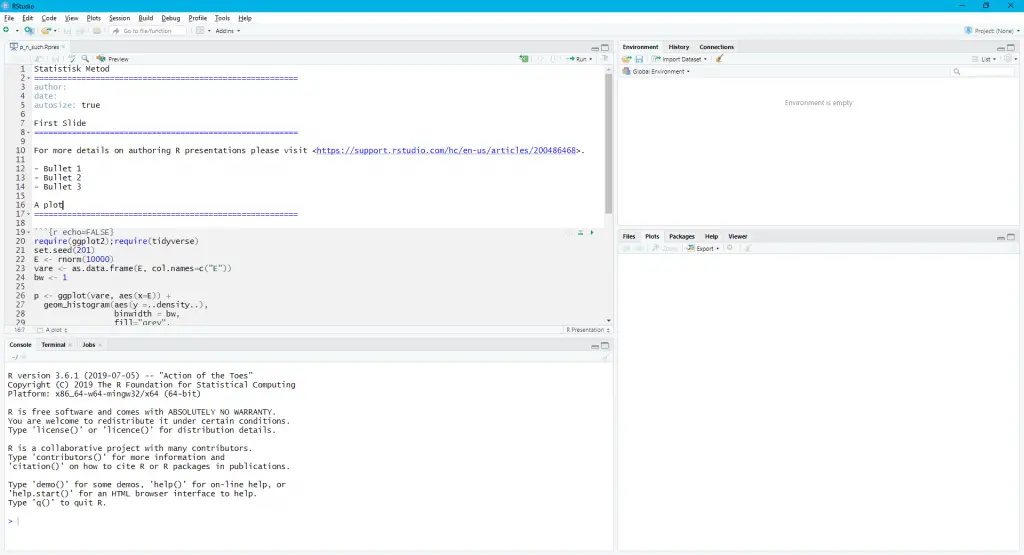

- Using r to write res2dinv files how to#
- Using r to write res2dinv files Offline#
Write.table ( data, "data.csv", sep = "\t", row.names = FALSE, col.names = FALSE ) Saving in R data format Write.csv ( data, "data.csv", row.names = FALSE, na = "" ) # Use tabs, suppress row names and column names Write.csv ( data, "data.csv", row.names = FALSE ) # Same, except that instead of "NA", output blank cells ' ) # Write to a file, suppress row names Use the command below command to execute the program.Data <- read.table ( header = TRUE, text = '
Using r to write res2dinv files Offline#
If an error is encountered before finding a delimiter, it returns the data read before the error and the error itself.Įxample 1: Use the offline compiler for better results. inputReader.ReadString(‘\n’) : This method is used to read user input from stdin and reads until the first occurrence of delimiter in the input, returning a string containing the data up to and including the delimiter.bufio.NewReader(os.Stdin) : This method returns a new Reader whose buffer has the default size(4096 bytes).

The argument passed to panic() will be printed when the program terminates. Panicln is equivalent to Println() followed by a call to panic().
 log.Panicf : Panic is just like an exception that may arise at runtime. It is equivalent to Printf() followed by a call to os.Exit(1). log.Fatalf : Fatalf will cause the program to terminate after printing the log message. The WriteFile() method takes in 3 different parameters, the first is the location of the file we wish to write to, the second is the data object, and the third is the FileMode, which represents the file’s mode and permission bits. ioutil.WriteFile() : The ioutil.WriteFile() is used to write data to a file. This method returns either the data of the file or an error. ioutil.ReadFile() : The ioutil.ReadFile() method takes the path to the file to be read as it’s the only parameter. If a file with the same name already exists, then the create function truncates the file. os.Create() : The os.Create() method is used to creates a file with the desired name. The bufio module implements buffered I/O which helps to improve the CPU performance. The os module provides the ability to access native operating-system features. It defines a type, Logger, with methods for formatting the output. The log module implements simple logging package. The fmt module implements formatted I/O with functions to read input from the stdin and print output to the stdout. The io/ioutil module is also used to write content to the file. In order to read from files on the local system, the io/ioutil module is put to use. Golang offers a vast inbuilt library that can be used to perform read and write operations on files.
log.Panicf : Panic is just like an exception that may arise at runtime. It is equivalent to Printf() followed by a call to os.Exit(1). log.Fatalf : Fatalf will cause the program to terminate after printing the log message. The WriteFile() method takes in 3 different parameters, the first is the location of the file we wish to write to, the second is the data object, and the third is the FileMode, which represents the file’s mode and permission bits. ioutil.WriteFile() : The ioutil.WriteFile() is used to write data to a file. This method returns either the data of the file or an error. ioutil.ReadFile() : The ioutil.ReadFile() method takes the path to the file to be read as it’s the only parameter. If a file with the same name already exists, then the create function truncates the file. os.Create() : The os.Create() method is used to creates a file with the desired name. The bufio module implements buffered I/O which helps to improve the CPU performance. The os module provides the ability to access native operating-system features. It defines a type, Logger, with methods for formatting the output. The log module implements simple logging package. The fmt module implements formatted I/O with functions to read input from the stdin and print output to the stdout. The io/ioutil module is also used to write content to the file. In order to read from files on the local system, the io/ioutil module is put to use. Golang offers a vast inbuilt library that can be used to perform read and write operations on files. Using r to write res2dinv files how to#
How to convert Int data type to Float in Golang?. How to Delete or Remove a File in Golang?. strings.Join() Function in Golang With Examples. How to Assign Default Value for Struct Field in Golang?. Different Ways to Find the Type of Variable in Golang. 
How to copy one slice into another slice in Golang?. How to Take Input from the User in Golang?. How to Replace Characters in Golang String?. strings.Replace() Function in Golang With Examples. How to convert a string in lower case in Golang?. fmt.Sprintf() Function in Golang With Examples. strings.Contains Function in Golang with Examples. Different ways to compare Strings in Golang. time.Sleep() Function in Golang With Examples. Different ways to concatenate two strings in Golang. ISRO CS Syllabus for Scientist/Engineer Exam. ISRO CS Original Papers and Official Keys. GATE CS Original Papers and Official Keys.








 0 kommentar(er)
0 kommentar(er)
